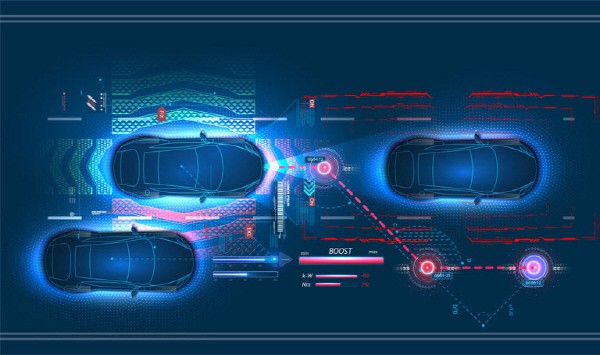
Hyundai Mobis has developed a technology that uses artificial intelligence (AI) to determine the expected driving route of nearby vehicles. It is a technology to improve driving stability by improving the completeness of the semi-autonomous driving function. It is expected that the application will be expanded starting with Hyundai Motor Group's luxury vehicles such as Genesis.
According to the Korean Intellectual Property Office on the 17th, Hyundai Mobis recently applied for a patent for the 'Smart Cruise Control (SCC) system and information display method'.
Hyundai Mobis said, “It is a technology that not only detects the flow of the vehicle in front but also of surrounding vehicles and analyzes the expected driving scenario of the vehicle with AI and informs the driver. It is technology for the future, so there is no vehicle with this technology yet.”
Th key feature of SCC is semi-autonomous driving. It calculates the distance to the vehicle in front by using sensors such as cameras and radar, then accelerates and decelerates on its own to maintain a certain distance and continue driving.
The driver can check the status of the vehicle being followed through the dashboard. In the case of luxury cars such as the GV80, it detects nearby vehicles and displays them through the head-up display (HUD). However, the problem is that it cannot understand the expected driving route of nearby vehicles.
Hyundai Mobis uses AI to determine the level of risk between nearby vehicles and changes the layout of information displayed according to the level of risk, so the driver can recognize it.
AI calculates △Nearby Vehicle Entry Index △Nearby Vehicle Collision Warning Index △ The time required to collide with nearby vehicles and calculates the driving situation index as 0~2. The response is divided into a vehicle with no impact (0), a vehicle that may affect driving but does not have a risk of collision (1), and a vehicle with a risk of collision (2).
This information can be visually perceived by the driver via the dashboard or HUD. Since the vehicle is also aware of the situation, it can respond to sudden accidents and reduce damage.
The technology is evaluated as a transitional technology before moving on to fully autonomous driving. In the future, when V2V communication between connected cars is established, the movement of other vehicles can be predicted, so there is no risk of an accident.
Other automakers are also developing technologies that allow cars to predict the movements of other vehicles just like humans. Tesla recently added related functions through the 'Full Self-Driving (FSD) Beta v9.2' update.
By Staff Reporter Jinhyung Park (jin@etnews.com)